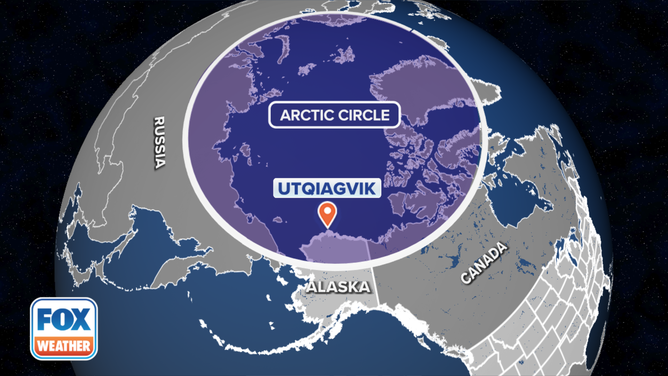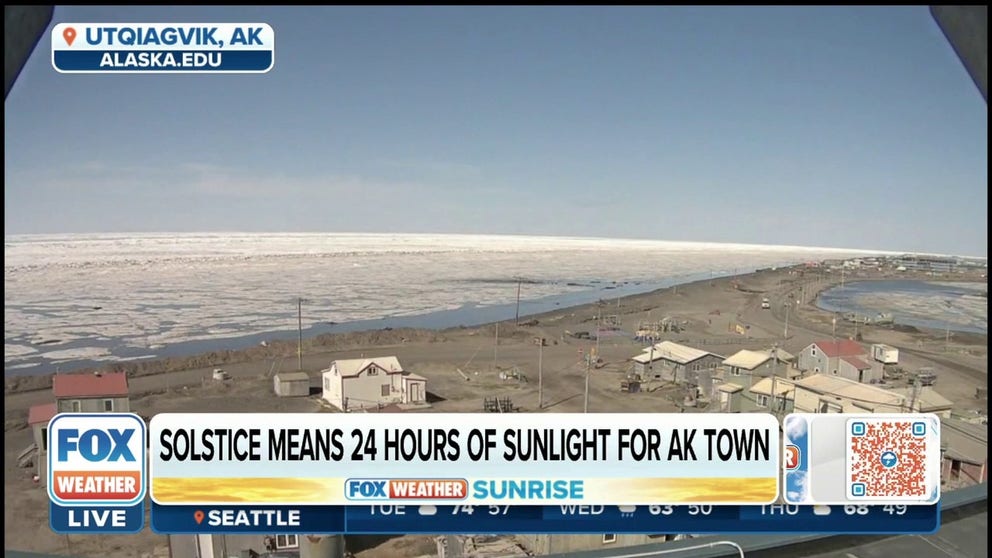Sun sets for first time in 83 days in America's northernmost town, Utqiaġvik, Alaska
Northern Alaska will now quickly lose daylight until mid-November when the sun will completely disappear until after the New Year
Summer solstice means 24 hours of sunlight for Alaska town
The summer solstice means 24 hours of sunlight for Utqiagvik, Alaska.
UTQIAGVIK, Alaska – After nearly three months of constant daylight, the sun dipped below the horizon in Utqiaġvik, Alaska, Tuesday for the first time since May.
Northern Alaska is home to the only place in the U.S. that enjoys nonstop sunlight in the annual period known to locals as the "midnight sun."
After the sun rose in Utqiaġvik on May 10 at 2:58 a.m., it did not set again until 83 days later on Tuesday, Aug. 2, at 2:01 a.m.
The nearly three-month period of 24/7 daylight happens in America's northernmost town, formerly known as Barrow, every year because of the Earth’s tilt of the Northern Hemisphere toward the sun during the late spring and summer.
HOW TO WATCH FOX WEATHER ON TV
Even with the sun up at all times, the approximately 5,000 residents still had to deal with chilly temperatures.
July is typically the warmest month for Utqiaġvik, but the average high only reaches a balmy 48 degrees and average lows are just above freezing at 36 degrees.
HOW DO ALASKANS COPE WITH NEARLY ALL-DAY DARKNESS IN WINTER, ALL-NIGHT DAYLIGHT IN SUMMER?
The Alaskan village's warmest day so far this summer occurred back on June 26 when temperatures reached 69 degrees, but the majority of days since June have been spent in the 40s and 50s.
Despite the chilly summers, these temperatures are warm enough to melt the ice around the Arctic Circle and allow for cargo shipments by barge to reach America’s Last Frontier.

A map showing the location of Utqiaġvik within the Arctic Circle.
(FOX Weather)
The Utqiaġvik government says even though the community has modernized, fishing, hunting and whaling are still staples in the community that is dominated by Iñupiat Alaskan Natives.
CLICK HERE TO GET THE FOX WEATHER UPDATE PODCAST
Since the Arctic Circle is home to 24 hours of daylight in the late spring and summer, the visibility of the Northern Lights is virtually nonexistent because of the lack of darkness.
But Northern Alaska will now quickly lose daylight until mid-November when the sun will completely disappear until after the New Year.
